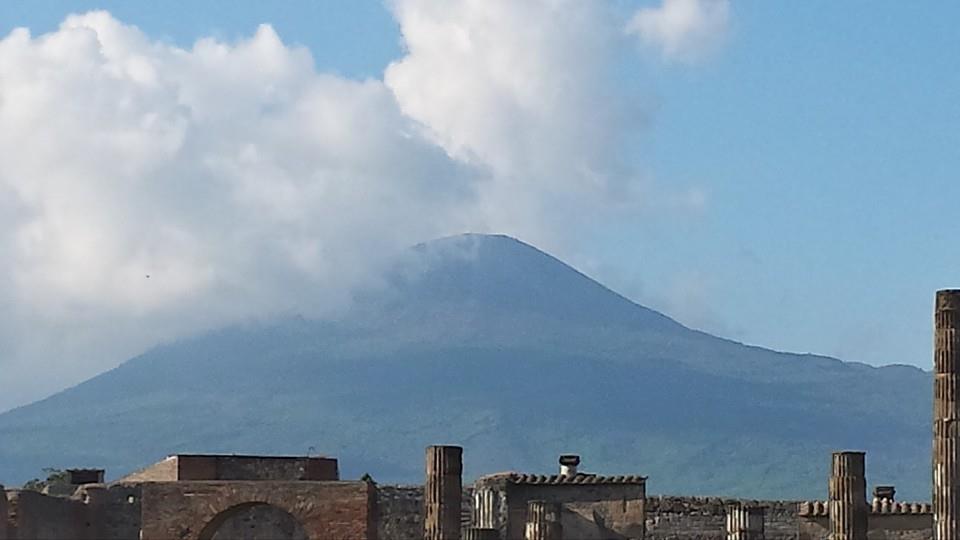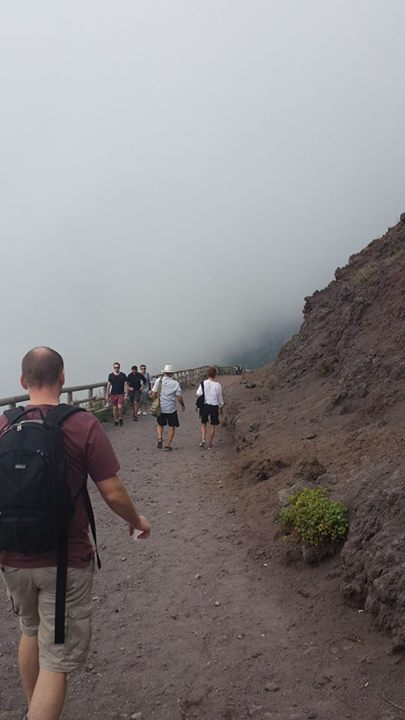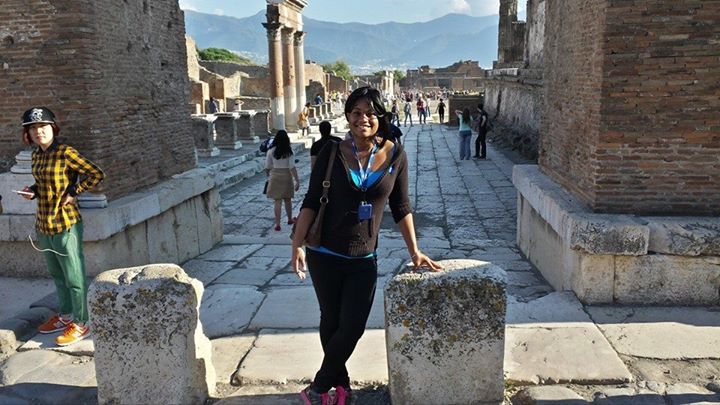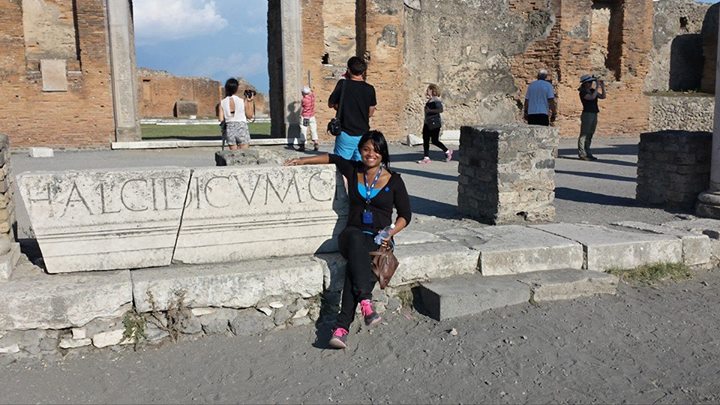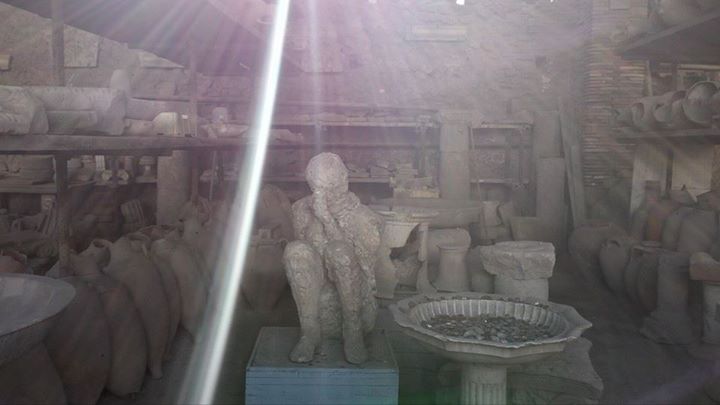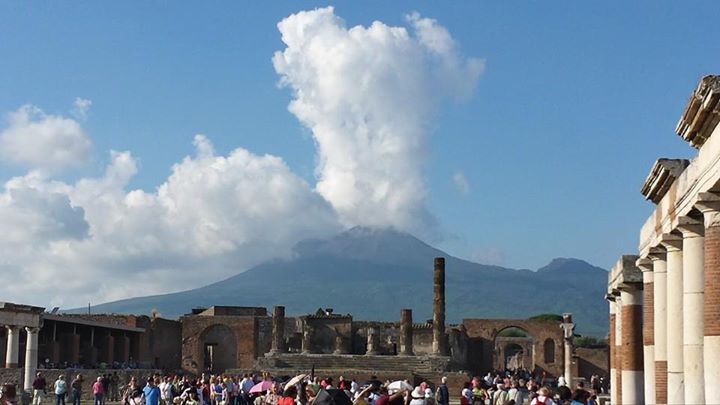History Nerd Girl's Rant...
My husband and I quickly found out walking up the side of a volcano is hard. Walking down is a lot easier though.
I’ve been waiting for this particular day for a while so I could write this precise post. This is the day in the year 79 that Mount Vesuvius started its eruption! Okay, I know my need to write a piece on a disaster that happened forever ago seems weird. Its contribution to our history isn’t even on the top ten of volcanic eruptions list. If you happened to be wondering what volcano is number one on the list, the explosion of Mount Tambora in Indonesia is. It ranked as "super-colossal" on the Volcanic Explosivity Index. That is a 7 on scale that only goes up to 8.
Mount Tambora
The eruption took place on April 1815 and the death toll from the eruption was estimated at 71,000 people.
Sorry, I promise to get my history nerd girl back on track.
I wanted to write on this for a few reasons:
1. My history nerd girl was itching to stretch her legs.
Calm down history nerd girl...
2. I love all things Italy.
3. Mount Vesuvius left us an archaeological treasure, Pompeii.
I could go on, but this is supposed to be a post, not a forever long rant of sorts. If there's one thing that anyone who knows me would say is I ABSOLUTELY LOVE historical sites and museums of all kinds! I'm also convinced that I had to be a Roman in one of my past lives, because of my love of and desire to consume all that's Italy. Just last October my husband and I spent 11 wonderful days in Rome, Naples, Paris, and Greece. We were even actually lucky enough to visit the ruins of Pompeii and climb up Mount Vesuvius. Well, I thought we were lucky. My husband thought I was trying cause over exertion, kill him, and collect the insurance money. But once we reached the summit he was as happy as I was.
Anyway, Mount Vesuvius stood 6,500 feet high, shadowing many cities during ancient times and even now. The ancient city of Pompeii, Italy was established in 600 B.C. and was built approximately 16 miles away from the infamous volcano. When the eruption started, it only took a little over a day for the disaster to destroy the entire city. However it didn’t erase it from history. If anything, it ensured the memory of the city will live on forever!
During the construction of an aqueduct in 1595 Pompeii was rediscovered. The most amazing part was how everything (even its people) was preserved by the volcano’s ash.
I know some of you are wondering what would make anyone want to live that close to a live volcano. For starters, there’s a good chance they didn’t know it was still active. We now know that most earthquakes directly beneath a volcano are caused by movement of magma. However, that bit of knowledge would’ve been above the ancients' grasp. So the earthquake in February of the year 63 couldn’t warn anyone of the coming catastrophe.
There are some that believe the people of Pompeii actually did know of the pending disaster, because a nice chuck of their residents high-tailed it out of town after the earthquake. However it was more likely that the major damage Pompeii suffered from the earthquake was the culprit of the people cutting their losses than insider knowledge of what was to come. In Pompeii there were very few buildings that escaped damage during the earthquake. Temples, houses, and parts of the dense city walls buckled. Of course there were also fires that did even more damage. Their livestock that surrounded the countryside weren’t in the clear either, as they died from the release of poisonous gases. The water supply to the city was also severely affected with damage to aqueducts and underground pipes. Thousands died from the earthquake alone.
Okay, they didn’t know the volcano was active, but they did know it was a volcano and an earthquake that dealt that much damage should’ve made everyone run for the hills, right? The hills away from the volcano, at least.
I would’ve agreed with you at first glance, but as they say it’s all about location, location, location.
Following seismic activity and coastal changes, Pompeii now stands more inland. But it would have been much closer to the sea during the thriving years of Pompeii. From the beginning, cities and population centers always are the densest by water. Also the volcano itself lured people near it with the rich soil it rendered from long past eruptions, making the city one of the more important ports on the Bay of Naples. The surrounding settlements such as Nola, Nuceria, and Aceria would have sent their produce to Pompeii for transportation to all over the other sections of the Empire. Goods such as: olives, olive oil, wine, wool, salt, walnuts, figs, almonds, cherries, apricots, onions, cabbages and wheat were exported from the area.
That would have been seen as a big loss for many Romans. So rebuilding was the smart option for the ones that chose to stay. Slowly, the town made repairs and life began to return to normal soon enough.
Whatever their reasons to stay, it proved to be the wrong choice when the volcano’s mouth started to spew magma, rock, ash, etc. all over the place. It’s indicated that about 2,000 residents of Pompeii survived the initial eruption, but the following morning another more powerful eruption finished the job the first started, killing everyone left instantly. Soon after, it started to rain and the water mixed with the ash, forming a sort of concrete, preserving the city for us to find later. Some scientists believe that there may still be other villages buried by Vesuvius that we haven’t found; yet.
I couldn’t imagine the sadness that one day had reaped for the people of Pompeii and their families. And of course it would’ve been better for all involved for that day to have never had happened. However, it’s a bitter-sweet blessing that it left us with some knowledge of how some of the people lived in ancient times that could’ve been lost to history. That in itself is priceless.
Okay, I think my history nerd girl is properly exercised for the time being. I hope everyone has a beautiful day!



